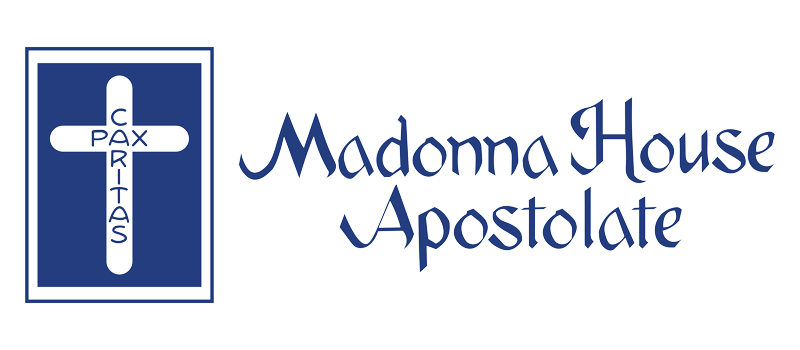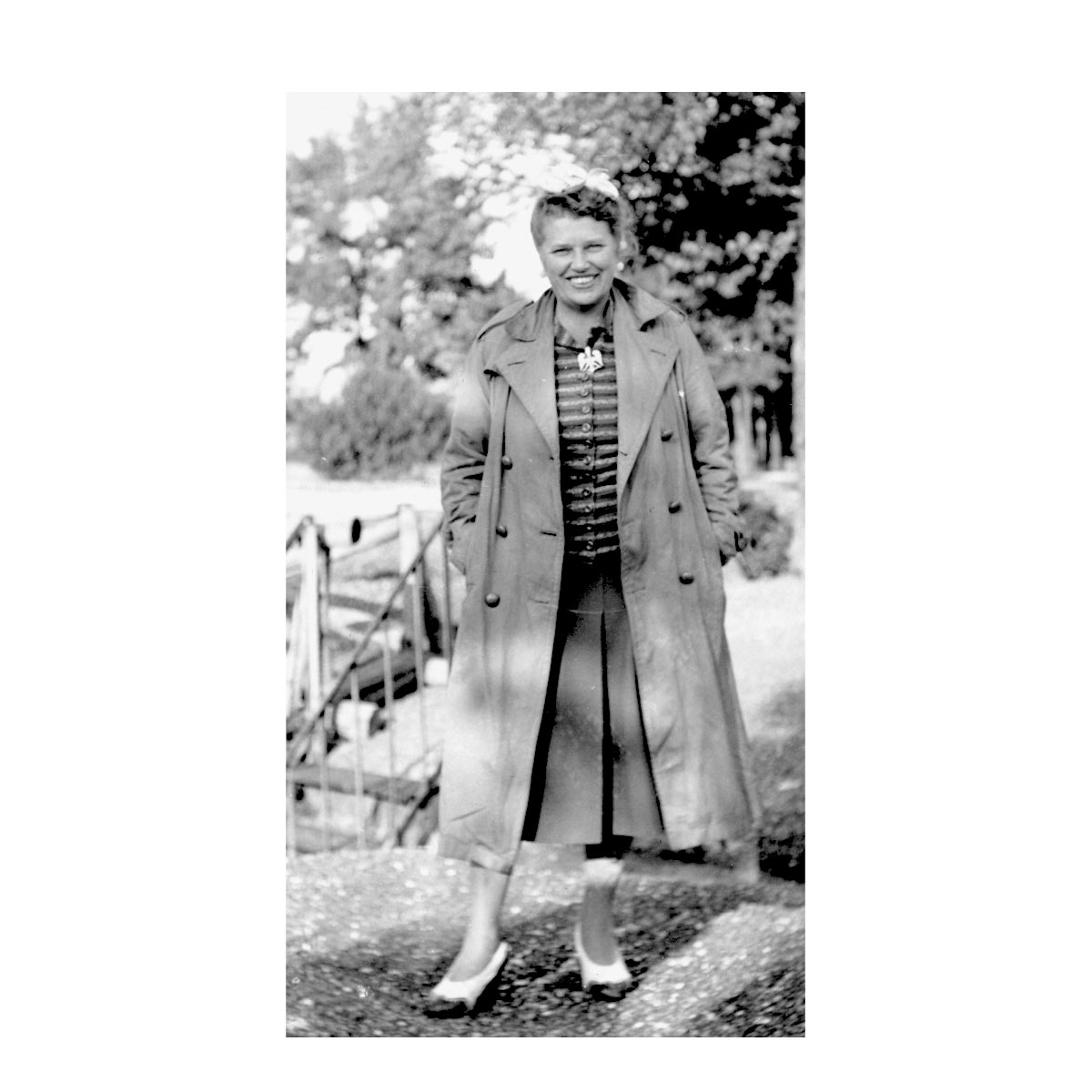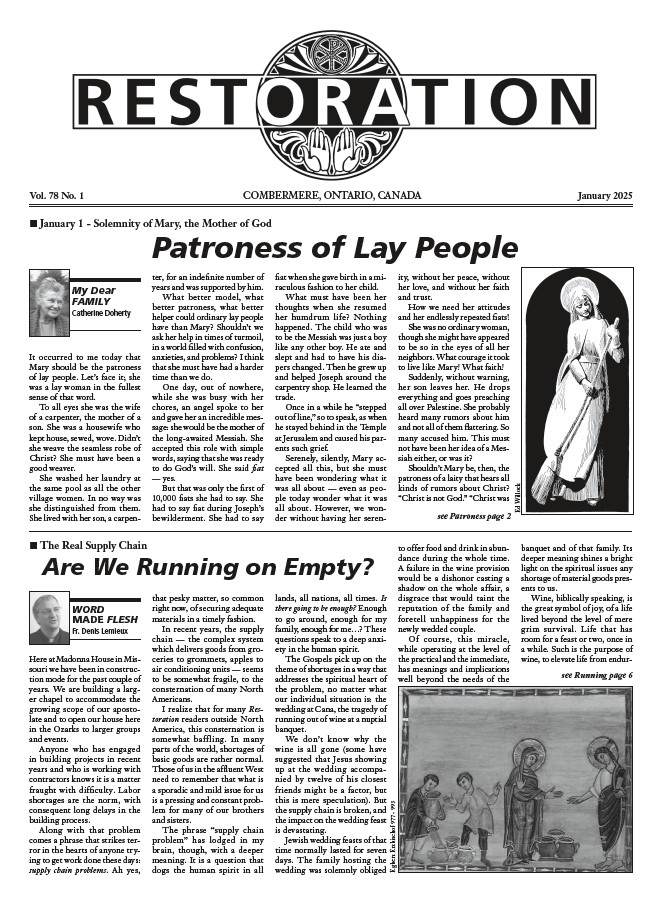This content has been archived. It may no longer be relevant
If there is anyone in our modern age who can show us how to apply the Gospel to daily life, it is Catherine de Hueck Doherty. For hers is a spirituality of the ordinary, a spirituality of Nazareth, and it has been forged and tested by fire in the community of Madonna House.
It is also a spirituality that is vast, and one whose genius is its “portability.” For it can be lived in any place, in any kind of work, in any life situation, in any vocation.
Catherine’s talks and writings, which contain this spirituality, range from practical down-to-earth advice to mystical poetry; from cogent explanations of the faith and forceful admonitions to live the Gospel without compromise to reminiscences about her idyllic childhood in Pre-Revolutionary Russia.
But whenever Catherine spoke or wrote, on whatever topic, her words ultimately reflected one thing: her passionate love affair with God.
It was a love affair that understood the cross as a marriage bed and pain as the kiss of Christ. It was a love affair that Catherine lived to the hilt, one into which she dove headfirst every day, on good days and bad days, and in all the seasons of her life. Her whole life, in fact, was a big, passionate love affair with God.
This love story sprang from Russian roots, and began with her birth on August 15, 1896 in a city now called Gorki. She was raised by wise and devout Christian parents who owned an extensive estate where Catherine learned numerous practical skills in an Old World atmosphere.
Her father was a diplomat, so she traveled extensively. She was exposed to many cultures, learned several languages, and first attended school in Egypt.
Catherine’s life contained enough adventure for an epic film and included such experiences as marriage at age fifteen, nursing on the German front in World War I, and the Bolshevik takeover of her beloved city of St. Petersburg.
The story of her escape from Communist Russia alone would make a good movie. First Catherine and her husband, the wealthy Baron Boris de Hueck, fled to a family summer home in Finland, where they were captured and nearly starved to death by a group of Communists.
Then, liberated by White Russian soldiers, they went first to Scotland and then to England. After two years, they ended up penniless in Canada where Catherine soon gave birth to their son George.
There, and in New York City, Catherine worked as a sales clerk, a laundress, a maid, and a waitress to support her infant son and her husband who was in frail health.
After a time, she found a well-paying job in a lecture bureau where she eventually became an executive. Meanwhile Boris, who had been trained as an architectural engineer in Russia, managed to form his own company in Montreal.
Their journey had been one from riches to rags to riches again. But it did not end there. Though outwardly successful, they had endured deep inner pain.
They had struggled through war and revolution, and had lost their culture. They were refugees in a foreign land, and had suffered long separations as each sought to pull the family out of the mire of poverty.
Through all of this, great damage had been done to their married life. Finally, after an honest attempt at reconciliation, Boris and Catherine decided to separate.
By now the world was in the Great Depression, and Catherine found herself pulled in two conflicting directions. She was a single parent with a small child to support and she was hounded by Christ’s words to the rich young man, Sell all you possess, give it to the poor, and come follow me (Mt 19:21).
Eventually she did exactly that, giving her wealth and possessions to the poor, keeping only enough to provide for her son. Then, with the blessing of her bishop, Neil McNeil of Toronto, she went to live and work with the poor in the slums of Toronto, where she founded Friendship House.
Her passionate love of Christ in the poor and her sacrificial service to them in small, humble ways led to the establishment of Friendship Houses in New York City’s Harlem, and in Chicago and other cities in the 1930s and 1940s.
She became well-known for her work in social justice and was a friend of Dorothy Day and Thomas Merton. For her words and work, she received honorary degrees, awards, and accolades, as well as persecution, threats, hatred, and heckling. But always her words, like her actions, were strong, clear, and uncompromising, solidly based on the Gospel of Christ.
Catherine’s son grew up and became a successful businessman, and her marriage was annulled by the Church.
One day Edward J. Doherty, one of the highest paid newspaper reporters in the United States, came to Friendship House Harlem to interview her for a magazine article. The blue-eyed Russian baroness captured the heart of this romantic Irishman, and in 1943, they were married.
In 1947, they moved to Combermere, Ontario, in the backwoods of Canada, to begin a new life and engage in rural mission work. They lived in a small wood-frame house they called, “Madonna House.”
Life was both rustic and rigorous. Madonna House had a hand pump for water and an outdoor toilet. There was wood to chop for the cook stove and “mountains” of snow to shovel during the long, cold winter.
Though life was anything but comfortable, people came to join them, much to Catherine’s surprise. They prayed together, ate together, sang together, and worked together, learning from Catherine how God can permeate even the smallest task when it is done out of love for him.
As time went on, more people came and went, and Madonna House grew and thrived.
In October 1951, at the First Lay Apostolic Congress in Rome, the papal secretary, Msgr. Montini (later to become Pope Paul VI), told Catherine that “there is need within the Church for a community like yours” and encouraged Catherine to establish Madonna House on a permanent basis, that is, form it into a community whose members join for life.
This she did, and after this, Catherine and Eddie took a vow of chastity and lived in separate houses. (Eddie was later ordained a priest in the Melkite Rite which allows clergy to be married.)
Over the years, Catherine continued to speak and write for the formation of her growing community and its visitors, and for whoever else would listen.
Her vision was immense, encompassing farming, carpentry, cooking and cleaning, theology and philosophy, the fine arts, and drama.
“Nothing is foreign to the apostolate except sin,” she said. “The primary work of the apostolate is to love one another…. If we implement this law of love, if we clothe it with our flesh, we shall become a light to the world, for the essence of our apostolate is love, love for God poured out abundantly for others.”
In response to the deepening dilemmas of the Western world, Catherine offered the spirituality of her Russian past.
In response to the hunger for God she saw in our more and more secular world, she introduced the concept of poustinia. Poustinia is the Russian word for desert, which in a spiritual context is a place where a person meets God through solitude, prayer, and fasting.
In response to the rampant individualism of the modern world, she called Madonna House to “sobornost,” a Russian word meaning true unity of heart and mind in the Holy Trinity, a unity beyond purely human capacity.
And in response to the depersonalizing effects of modern technology, she restored in Madonna House a way of life that is simple, communal, centered on the needs of people, and deeply connected to God.
When Catherine de Hueck Doherty died, after a long illness, on December 14, 1985, she left behind a thriving spiritual family and mission houses around the world.
And she left to the Church, which she loved passionately, a spiritual heritage that is a beacon for the 21st century.
Based on the introduction to Grace in Every Season, (2001), pp.11-18, available from MH Publications.





